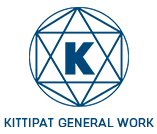Tertiary training data. Data removed in 2019 october.
Prepared article up-date: October 2020.
Into the EU-28 there have been 19.8 million tertiary training students in 2017, of which 61 percent were learning for bachelor’s degrees.
In 2017, females accounted for 54 per cent of all of the tertiary pupils in the EU-28; nonetheless, a lot of the pupils after doctoral studies had been males.
In 2017, almost one quarter of tertiary training students within the EU-28 had been business that is studying management or legislation.
Student-academic staff ratios in tertiary education, 2017
- Ireland: unavailable.
- EU-28: excluding Denmark and Ireland; protection deviations noted for Bulgaria, France and Portugal additionally apply.
- Bulgaria: excluding doctoral or comparable pupils enrolled in systematic organisations.
- Denmark: 2015.
- France: excluding institutions that are private.
- Portugal: includes post-secondary personnel that are non-tertiary courses in advanced schooling organizations.
- Supply: Eurostat (online information rule: educ_uoe_perp04)
This short article presents data on tertiary education (ISCED levels 5-8) in europe (EU) and types element of a publication that is online training and trained in the EU. Tertiary education — provided by universities as well as other higher education institutions — could be the standard of training after schooling that is secondary. It’s seen to try out a important part in culture, by fostering innovation, increasing financial development and development, and enhancing more usually the wellbeing of residents. Some European universities are being among the most prestigious in the field.
Numerous commentators predict that within the coming years here is increased interest in highly trained individuals; certainly, abilities gaps currently occur in certain EU Member States. Driven by electronic technology, jobs are getting to be more complex and flexible. It has led to progressively more companies looking for staff with the mandatory capabilities to handle complex information, think autonomously, be creative, utilize resources in a good and efficient way, aswell as communicate effectively.
A somewhat large numbers of pupils in tertiary training are internationally mobile and research abroad: an analysis with this sensation comes in an article that is separate.
Involvement
Dining dining Table 1 presents information regarding the true quantity of pupils in all of four quantities of tertiary training.
Bachelor’s, master’s and doctoral degrees of tertiary education are observed in most EU Member States, while short-cycle tertiary education, that is typically vocationally-oriented (occupationally-specific) to organize pupils for the labour market, isn’t an element of the training system in Bulgaria, Estonia, Greece, Lithuania, Romania and Finland, nor in Liechtenstein, Montenegro, North Macedonia or Serbia. It’s also quite unusual in a number of other people, as an example Czechia, Germany, Croatia and Poland.
Involvement by level
When you look at the EU-28 there have been 19.8 million tertiary training students in 2017 (see dining dining dining dining Table 1), of which 7.4 per cent were following short-cycle tertiary courses, 61.0 per cent had been learning for bachelor’s degrees, 27.7 percent for master’s levels and 3.8 per cent for doctoral levels.
In 2017, Germany, the essential populous EU Member State, had 3.1 million tertiary training pupils, that has been the number that is highest when you look at the EU and comparable to 15.6 percent for the EU-28 total senior match sites. France (12.8 percent regarding the total), great britain (12.3 %), Spain (10.2 per cent), Italy (9.3 per cent) and Poland (7.8 percent) had the following biggest student that is tertiary, accompanied by holland where 4.4 percent regarding the EU-28’s tertiary students examined.
Short-cycle tertiary courses were most frequent in France and Spain where they taken into account very nearly one 5th of most tertiary pupils (19.8 percent and 19.5 per cent correspondingly); they certainly were additionally fairly typical in Latvia and Austria where they taken into account stocks between 17 per cent and 18 percent. In Turkey, short-cycle tertiary courses had been a lot more typical as simply over 1 / 3 (35.5 per cent) of all of the tertiary students had been signed up for such courses.
More pupils were studying for bachelor’s degrees than for almost any other standard of tertiary education in each one of the EU Member States in 2017. Certainly, France, Luxembourg, Austria and Cyprus had been the only Member States where less than 50 per cent of most tertiary pupils had been learning for bachelor’s degrees. In comparison, when you look at the Netherlands (75.3 per cent) and Lithuania (75.9 per cent), a lot more than three quarters of tertiary pupils had been learning for bachelor’s degrees and also this share rose to nearly nine tenths in Greece (86.3 per cent), while really high stocks had been recorded for Montenegro (94.4 per cent) and North Macedonia (94.5 per cent).
Significantly less than one fifth of most tertiary pupils had been learning for a master’s levels in 2017 in Belgium,
Great britain, Spain and Ireland (in addition to Serbia one of the prospect nations), with this particular share falling below one tenth in Greece (along with Turkey, Montenegro and Macedonia that is north). By comparison, one or more 3rd of tertiary pupils had been studying for master’s degrees in Portugal, Germany, Czechia, Luxembourg, France, Italy, Croatia, Slovakia and Cyprus.
In 2017, the highest proportion of tertiary pupils studying for doctoral degrees among the list of EU Member States ended up being 9.1 per cent in Luxembourg, while an increased share had been recorded in Liechtenstein (16.1 percent) — see Table 1. Regardless of these countries that are relatively small the following greatest shares (among the EU Member States) had been recorded in Czechia (6.7 %) and Germany (6.4 per cent), while among the list of non-member nations shown in dining dining Table 1 a share of 8.3 percent had been recorded in Switzerland. Within the EU, the cheapest share of doctoral pupils into the final amount of tertiary training students ended up being seen in Malta (1.0 percent); reduced stocks had been recorded in North Macedonia and Montenegro.

